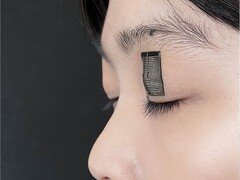Researchers at the University of California Los Angeles (UCLA) have developed a new soft, self-powered sensor that can reliably measure a person's fatigue level by tracking eyelid movements. This new device — detailed in the journal Nature Electronics — combines a novel sensor with an AI algorithm to decode fatigue. With a reported accuracy of 96.4%, this sensor could lead to the development of a new class of sensors.
The breakthrough is built on the discovery of giant magnetoelastic effect in soft materials, which was made in 2021 by the same UCLA team. This effect enables a soft polymer composite to convert the mechanical stress from an eyelid's movement into a measurable magnetic and then electrical signal.
This sensor is made of a silicone rubber layer embedded with micromagnets and a thin, conductive gold coil that is patterned onto a thermoplastic elastomer. It is a stretchable, waterproof sensor, and is designed to be worn on the eyelid. It translates eyelid movements into high-fidelity signals. These signals are then processed by a neural network. The AI analyzes six different eye-blink parameters from the sensor's data to categorize a person's level of fatigue.
In a broader view, the giant magnetoelastic effect in soft systems represents a transformative scientific discovery, yet its full theoretical and experimental potential remains to be unlocked. — Dr. Chen, leader of the research.
Source(s)
Nature via Tech Xplore
















